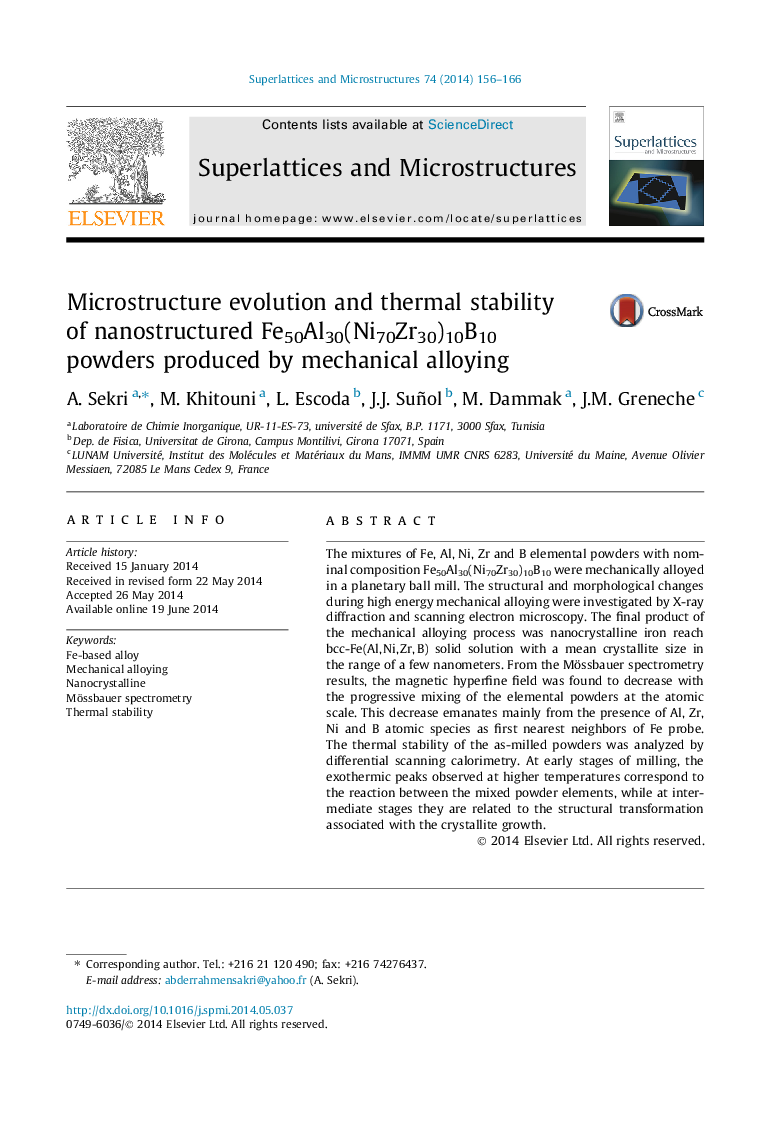| Article ID | Journal | Published Year | Pages | File Type |
|---|---|---|---|---|
| 1553349 | Superlattices and Microstructures | 2014 | 11 Pages |
•Mechanical alloying has been used to obtain nanocrystalline Fe–Al–Ni–Zr–B alloy.•XRD and Mössbauer spectrometry were used to study the solid state transformations of the powders.•The magnetic hyperfine field decreases with the progressive mixing of the elemental powders, at the atomic level.•Annealing of the nanocrystalline Fe–Al–Ni–Zr–B phase at 700 °C Fe3(Al, B) and Ni(Fe, Zr) phases.
The mixtures of Fe, Al, Ni, Zr and B elemental powders with nominal composition Fe50Al30(Ni70Zr30)10B10 were mechanically alloyed in a planetary ball mill. The structural and morphological changes during high energy mechanical alloying were investigated by X-ray diffraction and scanning electron microscopy. The final product of the mechanical alloying process was nanocrystalline iron reach bcc-Fe(Al, Ni, Zr, B) solid solution with a mean crystallite size in the range of a few nanometers. From the Mössbauer spectrometry results, the magnetic hyperfine field was found to decrease with the progressive mixing of the elemental powders at the atomic scale. This decrease emanates mainly from the presence of Al, Zr, Ni and B atomic species as first nearest neighbors of Fe probe. The thermal stability of the as-milled powders was analyzed by differential scanning calorimetry. At early stages of milling, the exothermic peaks observed at higher temperatures correspond to the reaction between the mixed powder elements, while at intermediate stages they are related to the structural transformation associated with the crystallite growth.
Graphical abstractFigure optionsDownload full-size imageDownload as PowerPoint slide
